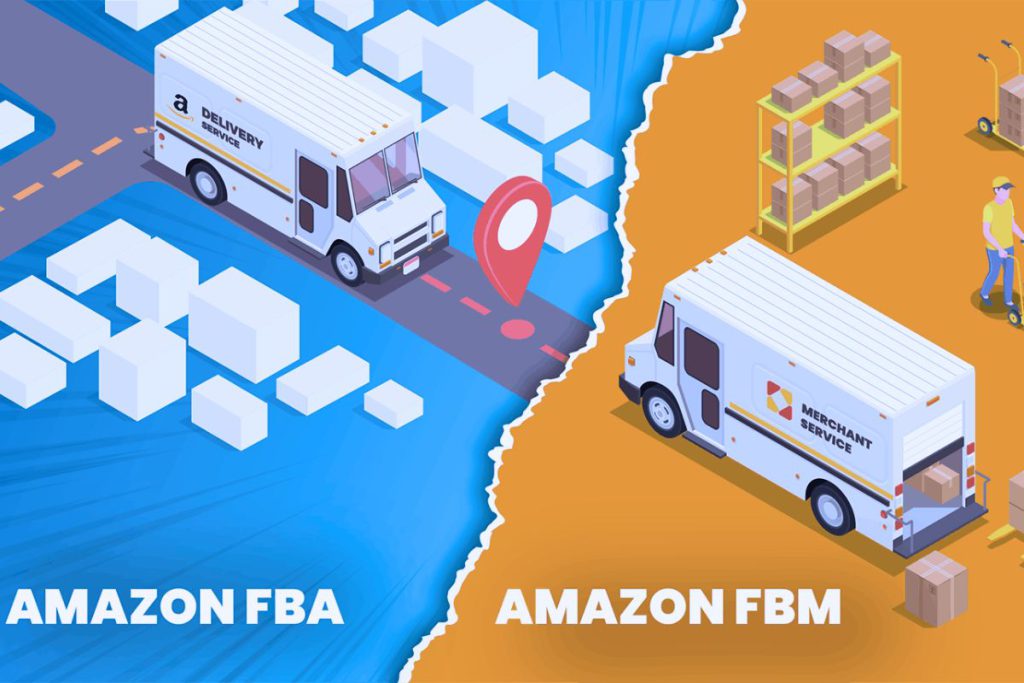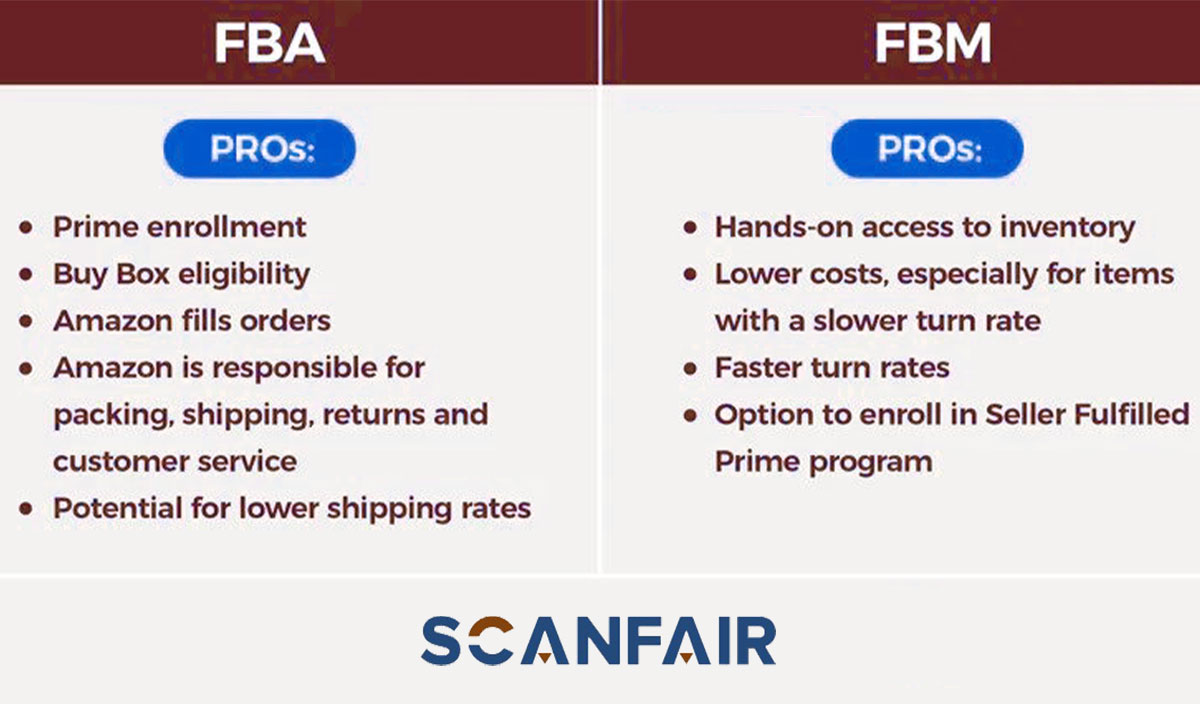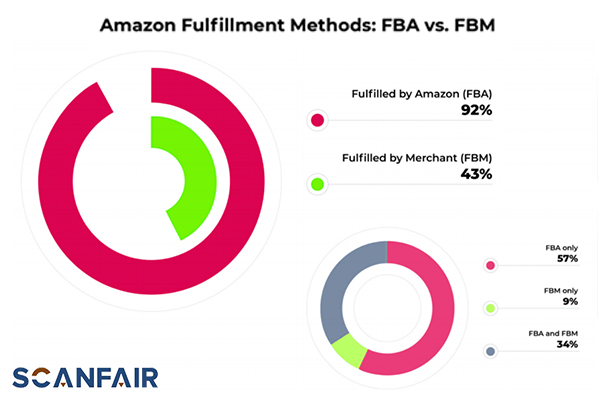In the fast-paced world of e-commerce, where convenience and efficiency reign supreme, Amazon has become the undisputed king. Whether you’re a seasoned seller or just dipping your toes into the online marketplace, understanding Amazon’s two primary fulfillment methods, Fulfillment by Amazon (FBA) and Fulfillment by Merchant (FBM), is crucial for your success. In this comprehensive guide, we will delve into the intricacies of Amazon FBA and FBM, comparing their pros and cons to help you make an informed decision about which one suits your business model best. This comprehensive guide from Scan fair aims to provide you with all the information you need to compare Amazon FBA and FBM.
What is Amazon FBA?
Fulfillment by Amazon (FBA) is a service offered by Amazon that allows sellers to store their products in Amazon’s fulfillment centers. Amazon takes care of the entire fulfillment process, from picking, packing, and shipping to customer service and returns. Here’s a closer look at the key aspects of Amazon FBA:
Pros of Amazon FBA
- Prime Eligibility: One of the biggest advantages of using FBA is that your products become eligible for Amazon Prime. Prime members, who are known for their high conversion rates and loyalty, have access to your products with free two-day shipping.
- Improved Visibility: Amazon tends to favor FBA products in its search results, giving them a visibility boost. This can result in higher click-through rates and increased sales.
- Time-Saving: FBA takes the hassle out of order fulfillment, freeing up your time to focus on other aspects of your business, such as sourcing and marketing.
- Customer Trust: Many customers trust products fulfilled by Amazon, as they are assured of Amazon’s top-notch customer service and hassle-free returns.
- Multi-Channel Fulfillment: FBA offers multi-channel fulfillment options, allowing you to fulfill orders from other sales channels, not just Amazon.
Cons of Amazon FBA
- Fees: FBA comes with fulfillment and storage fees, which can eat into your profit margins, especially if you’re selling low-margin products.
- Limited Control: When you use FBA, you have less control over the fulfillment process, which means you might not meet customer expectations in terms of packaging or shipping speed.
- Storage Limitations: During peak seasons, Amazon can limit the amount of inventory you can send to their fulfillment centers, potentially causing stockouts.
- Long-Term Storage Fees: If your products remain in Amazon’s warehouse for an extended period, you may incur long-term storage fees, which can be costly.
What is Amazon FBM?
Fulfillment by Merchant (FBM) is the alternative to FBA, where sellers are responsible for storing, packing, and shipping their products themselves. Here are the key aspects of Amazon FBM:
Pros of Amazon FBM
- Cost Savings: FBM eliminates the fulfillment and storage fees associated with FBA, making it a cost-effective option for many sellers.
- Control: With FBM, you have complete control over the fulfillment process, including packaging and shipping methods.
- No Long-Term Storage Fees: You won’t incur long-term storage fees with FBM because you manage your inventory.
- Customization: You can add personal touches to your packaging and branding, which can help set your products apart from the competition.
- No Inventory Restrictions: FBM allows you to maintain as much inventory as you’d like without Amazon’s restrictions.
Cons of Amazon FBM
- No Prime Eligibility: Your products won’t be eligible for Amazon Prime, potentially excluding a large pool of Prime members from purchasing.
- More Work: Managing fulfillment can be time-consuming, especially as your business grows. You’ll need to handle packing, shipping, and customer service yourself.
- Lower Visibility: FBM products may not enjoy the same level of visibility on Amazon’s platform as FBA products, which could impact your sales.
- Shipping Costs: Depending on your location and the shipping options you offer, shipping costs can be a significant expense.
Key Differences Between Amazon FBA and FBM
To make an informed decision, it’s crucial to understand the key differences between Amazon FBA and FBM:
- Shipping and Fulfillment: The most significant difference is who handles shipping and fulfillment. FBA is Amazon-centric, while FBM puts the onus on the seller.
- Prime Eligibility: FBA products are Prime-eligible, while FBM products are not. This can affect your product’s visibility and appeal to Prime members.
- Costs: FBA involves fees for storage, fulfillment, and returns, while FBM eliminates these fees but shifts the cost and effort of fulfillment to the seller.
- Control: FBA limits your control over the fulfillment process, while FBM gives you complete control but requires more hands-on involvement.
- Inventory Management: FBA has restrictions on inventory levels, while FBM allows you to manage your inventory as you see fit.
- Customization: FBM allows for more branding and packaging customization, helping you create a unique customer experience.
Which Fulfillment Method is Right for You?
The choice between Amazon FBA and FBM depends on several factors:
- Business Size: Small businesses or individuals often find FBM more cost-effective, while larger businesses may benefit from FBA’s convenience and Prime eligibility.
- Product Type: Some products, like perishables or fragile items, may be better suited for FBM to ensure careful handling.
- Shipping Location: Your proximity to Amazon’s fulfillment centers can impact shipping costs and speed. FBA can be advantageous if you’re near a center.
- Control Preference: If you want full control over the customer experience and fulfillment process, FBM is the way to go.
- Profit Margins: Consider your product’s profit margins. If they’re thin, FBA fees may eat into your profits.
- Seasonality: If your business experiences seasonal fluctuations, FBA’s inventory restrictions may be problematic.
The Hybrid Approach: FBA and FBM
Some Amazon sellers choose to use both FBA and FBM, leveraging the strengths of each fulfillment method. This hybrid approach can help you reach a broader audience and manage inventory more effectively.
For example, you might use FBA for your fast-moving, Prime-eligible products and employ FBM for items with higher profit margins or those that require specialized packaging or handling.
Pros of a Hybrid Approach
- Cost Control: You can control costs by strategically choosing which products to fulfill through FBA and which through FBM, optimizing your expenses.
- Prime Eligibility: Your high-demand products can remain Prime-eligible through FBA, attracting Prime members, while other products can still be offered through FBM.
- Customization: Maintain control over branding and packaging for select products, enhancing the customer experience.
- Inventory Management: Better manage inventory by allocating items to the most appropriate fulfillment method based on demand.
- Reduced Storage Fees: Minimize long-term storage fees by keeping slower-moving items in FBM.
- Flexibility: Adapt to changing market conditions and business needs by switching fulfillment methods as required.
Making the Transition: From FBA to FBM and Vice Versa
If you’re already using one fulfillment method and considering a switch, here’s how to make a smooth transition:
Transitioning from FBA to FBM:
- Update Your Listings: Change your listings to reflect the transition from FBA to FBM. Adjust shipping times and costs accordingly.
- Manage Inventory: Ensure you have the necessary inventory on hand to fulfill orders promptly.
- Optimize Shipping: Choose the most cost-effective shipping options to maintain competitive pricing.
- Customer Communication: Clearly communicate the change to your customers so they understand the new fulfillment process.
- Track Performance: Monitor how the transition affects your sales, customer satisfaction, and shipping times. Adjust your strategy as needed.
Transitioning from FBM to FBA
- Evaluate Eligibility: Ensure your products meet FBA’s eligibility requirements, including product condition and packaging.
- Prepare Inventory: Label and package your inventory according to Amazon’s guidelines before sending it to an FBA fulfillment center.
- Update Listings: Modify your product listings to indicate FBA fulfillment and update shipping times accordingly.
- Monitor Performance: Keep an eye on how FBA affects your sales velocity, Prime eligibility, and overall business performance.
Final Thoughts: Choosing Your Amazon Fulfillment Path
In the world of Amazon selling, the choice between FBA and FBM is not one-size-fits-all. Each method has its strengths and weaknesses, making it essential to align your decision with your unique business goals and circumstances.
For those seeking the ease of Amazon handling logistics, attracting Prime members, and having a hands-off fulfillment experience, FBA is often the preferred choice. However, it comes at a cost, both in terms of fees and control.
On the other hand, FBM provides sellers with more control over their operations, potentially saving on fees, but it requires more effort and resources to manage fulfillment. This method is suitable for those who prioritize customization, cost control, and the ability to fulfill orders according to their specific requirements.
Remember, the decision isn’t always binary. A hybrid approach, combining the strengths of both FBA and FBM, can provide flexibility, cost control, and Prime eligibility for select products, giving your business the best of both worlds.
Ultimately, whether you choose FBA, FBM, or a combination of both, ongoing evaluation and adaptation are key. The Amazon marketplace is dynamic, and what works best for your business today may need adjustment in the future. Continuously analyze your sales data, customer feedback, and fulfillment costs to ensure you’re on the path to Amazon selling success.
Tools and Resources for Amazon Sellers
Managing an Amazon business, whether you choose FBA, FBM, or a combination, can be complex. Fortunately, there are various tools and resources available to help streamline your operations and make informed decisions:
- Amazon Seller Central: This is your primary dashboard for managing your Amazon business. It provides tools for listing products, managing orders, and accessing performance metrics.
- Amazon FBA Calculator: This tool helps you estimate the fees associated with using FBA for specific products, allowing you to assess profitability.
- Inventory Management Software: Tools like SellerActive, InventoryLab, and RestockPro can help you manage inventory across different fulfillment methods, ensuring you have the right amount of stock.
- Feedback and Review Management: Services like Feedback Genius and FeedbackWhiz help you manage customer feedback and reviews, which are crucial for building trust and credibility on Amazon.
- Competitive Analysis Tools: Tools like Jungle Scout, Helium 10, and AMZScout provide insights into your competitor’s products and pricing, helping you make informed decisions about your listings.
- Shipping and Freight Services: If you handle your shipping, consider partnering with shipping and freight services like ShipStation or Freightos for efficient order fulfillment.
- Amazon Advertising: Utilize Amazon’s advertising platform to promote your products and increase visibility on the platform.
- Amazon Seller Forums and Communities: Engage with other Amazon sellers in forums and communities to share experiences, gain insights, and seek advice.
- Educational Resources: Amazon offers a range of educational materials and webinars to help sellers navigate the platform effectively.
Staying Competitive in the Amazon Marketplace
Regardless of your chosen fulfillment method, succeeding on Amazon requires ongoing dedication and adaptability. Here are some strategies to stay competitive:
- Optimize Product Listings: Regularly update and optimize your product listings with high-quality images, accurate descriptions, and relevant keywords to improve discoverability.
- Monitor Competitor Pricing: Keep an eye on your competitors’ pricing strategies and adjust your prices accordingly to remain competitive.
- Customer Service Excellence: Provide top-notch customer service, including quick response times to inquiries and addressing customer issues promptly.
- Solicit Reviews: Encourage satisfied customers to leave positive reviews, as these can significantly impact your product’s rankings and credibility.
- Inventory Management: Stay on top of your inventory levels to avoid stockouts and overstock situations, which can harm your seller metrics.
- Expand Product Catalog: Gradually expand your product offerings to reach a wider audience and reduce reliance on a single product.
- Advertise Strategically: Utilize Amazon Advertising to promote your products effectively, targeting the right audience with relevant keywords.
- Stay Informed: Keep up with Amazon policy changes, industry trends, and best practices through continuous learning and networking with other sellers.
Conclusion
Amazon FBA offers the convenience of hands-off fulfillment, Prime eligibility, and access to Amazon’s vast customer base, but it comes with fees and reduced control. Amazon FBM provides more control, cost savings, and customization but requires additional effort and resources.
Ultimately, many sellers find success by adopting a hybrid approach, strategically using both FBA and FBM to maximize their reach and profitability.
Whichever path you choose, remember that success on Amazon requires continuous adaptation, a focus on customer satisfaction, and a commitment to optimizing your operations. As the e-commerce landscape evolves, staying informed and agile will be key to thriving as an Amazon seller.



